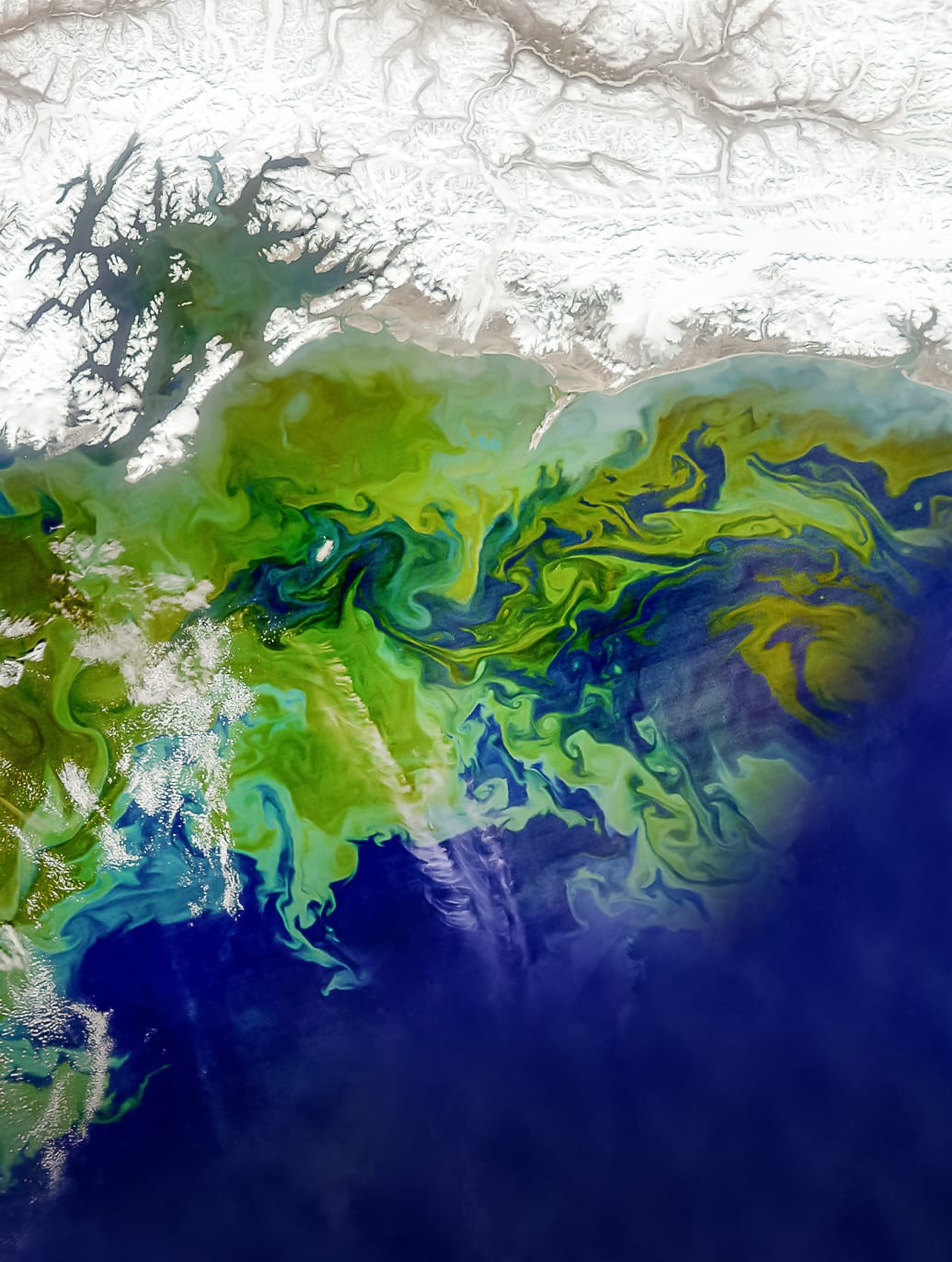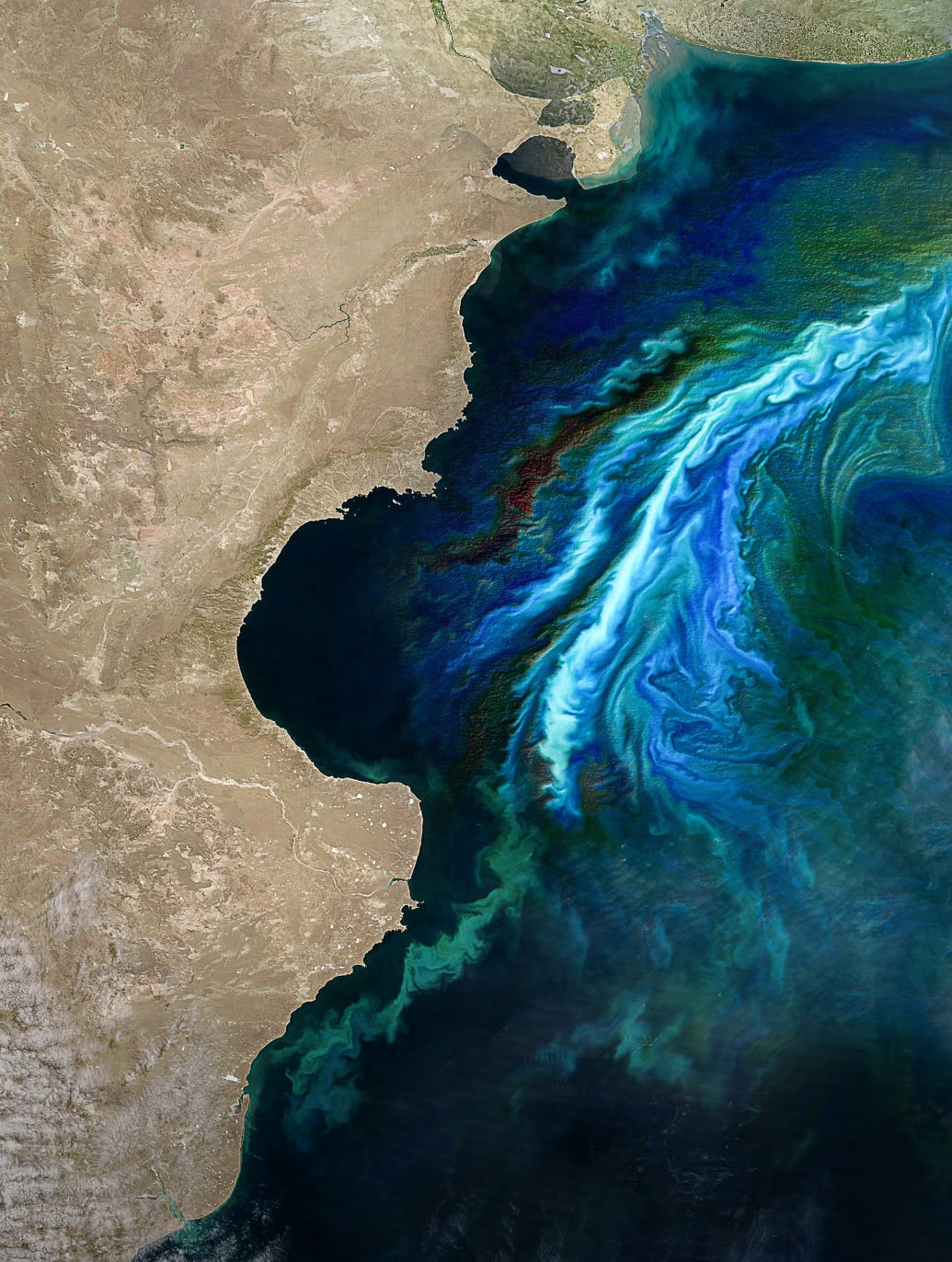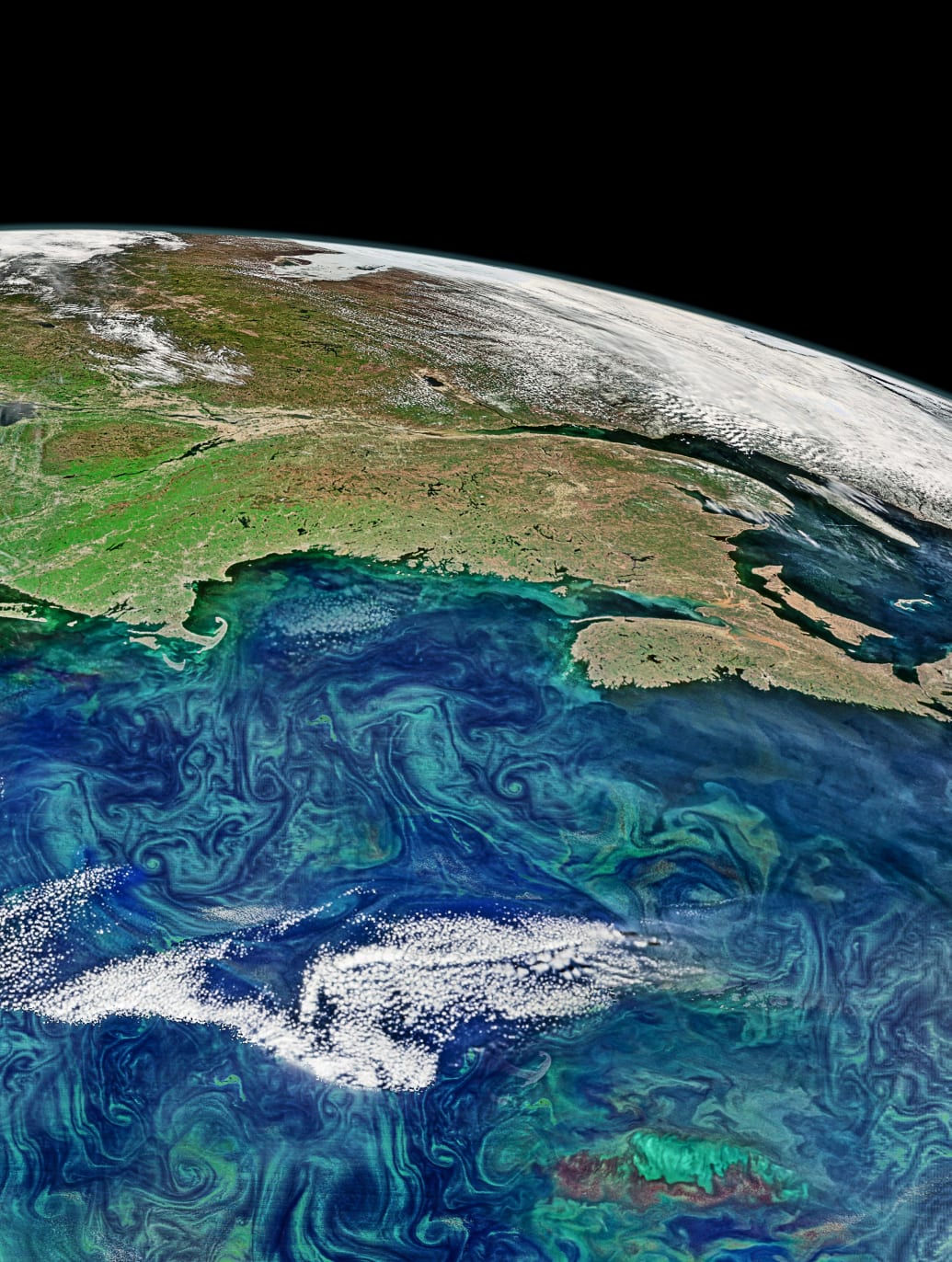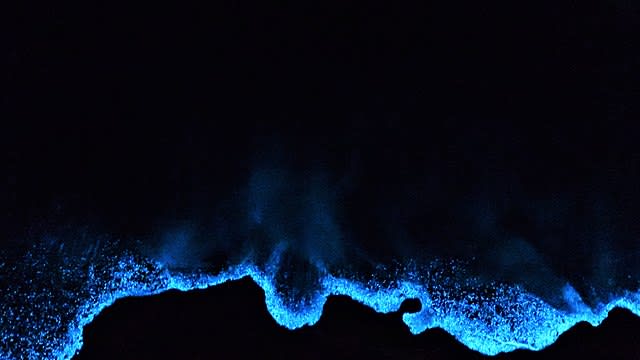Phytoplankton are possibly the most important lifeforms on the planet. Not only do these microscopic organisms play a massive role in producing the oxygen that we breathe, but they also provide a massive food source for life in the ocean and even produce gasses that eventually form clouds.
Curiously, phytoplankton blooms—or what happens when the organisms grow rapidly—are also capable of bioluminescence and create some of the most stunning and dream-like phenomena in nature.
Bioluminescent phytoplankton at the Düne, Helgoland.
Wikimedia Commons
However, there’s also a darker side to them. Too much phytoplankton bloom results in algal blooms, or red tide. This can cause oxygen levels in the water to actually be depleted resulting in dead-zones in these ecosystems—killing fish and other marine life, while depriving human populations of a crucial drinking water source.
That’s why it’s so important to keep track of them. A study published on March 1 in the journal Nature found that phytoplankton blooms increased in size between 2003 and 2020. The authors also discovered that the blooms occurred more frequently throughout coastal regions—and warn that it’s a direct consequence of warming ocean temperatures.

Intensifying phytoplankton blooms in earth’s coastal oceans
Lian Feng
More than 760,000 images from NASA’s Earth-observing satellite named Aqua were analyzed for the paper. Researchers discovered that the amount of bloom-affected areas increased by nearly 4 million square kilometers over the two decades. In 2020, phytoplankton bloom covered a total of 31.47 million square kilometers of ocean—or roughly 9 percent of total ocean area.
Of course, humans play a massive role in the boom of the past 20 years. Due to the effects of anthropogenic climate change, ocean temperatures have steadily increased. Nutrient pollution from things like fertilizers and sewage also cause phytoplanktons to grow quickly—and can result in red tide.
“Changes in climate can also affect ocean circulation, altering ocean mixing and the transport of nutrients that drive the growth of marine phytoplankton and bloom formation,” the authors wrote.

Intensifying phytoplankton blooms in earth’s coastal oceans.
Lian Feng
So phytoplankton blooms are ultimately a bit of a double-edged sword. On the one hand, they provide all life on the planet with vital oxygen to breathe and a reliable food source. Too much, though, results in oxygen being depleted in our water, which can harm humans and animals alike.
It serves as a good reminder of the delicate balance on which our planet sits. A nudge one way or another can have a catastrophic domino effect that affects life everywhere. That’s why initiatives like the UN’s climate goal of limiting average global temperatures to below 2 degrees Celsius above pre-industrial levels are so important.
Studies like this also go a long way in helping lawmakers craft effective environmental policy, and strategies to mitigate more harmful phytoplankton bloom. We wouldn’t hold our breath for that to happen right away though.

Intensifying phytoplankton blooms in earth’s coastal oceans.










